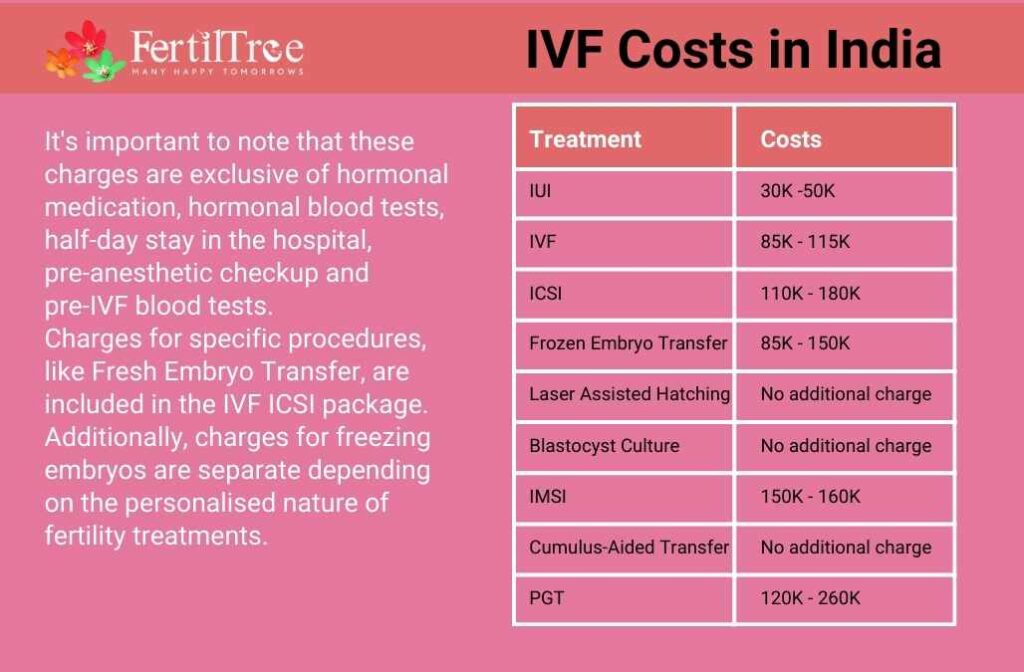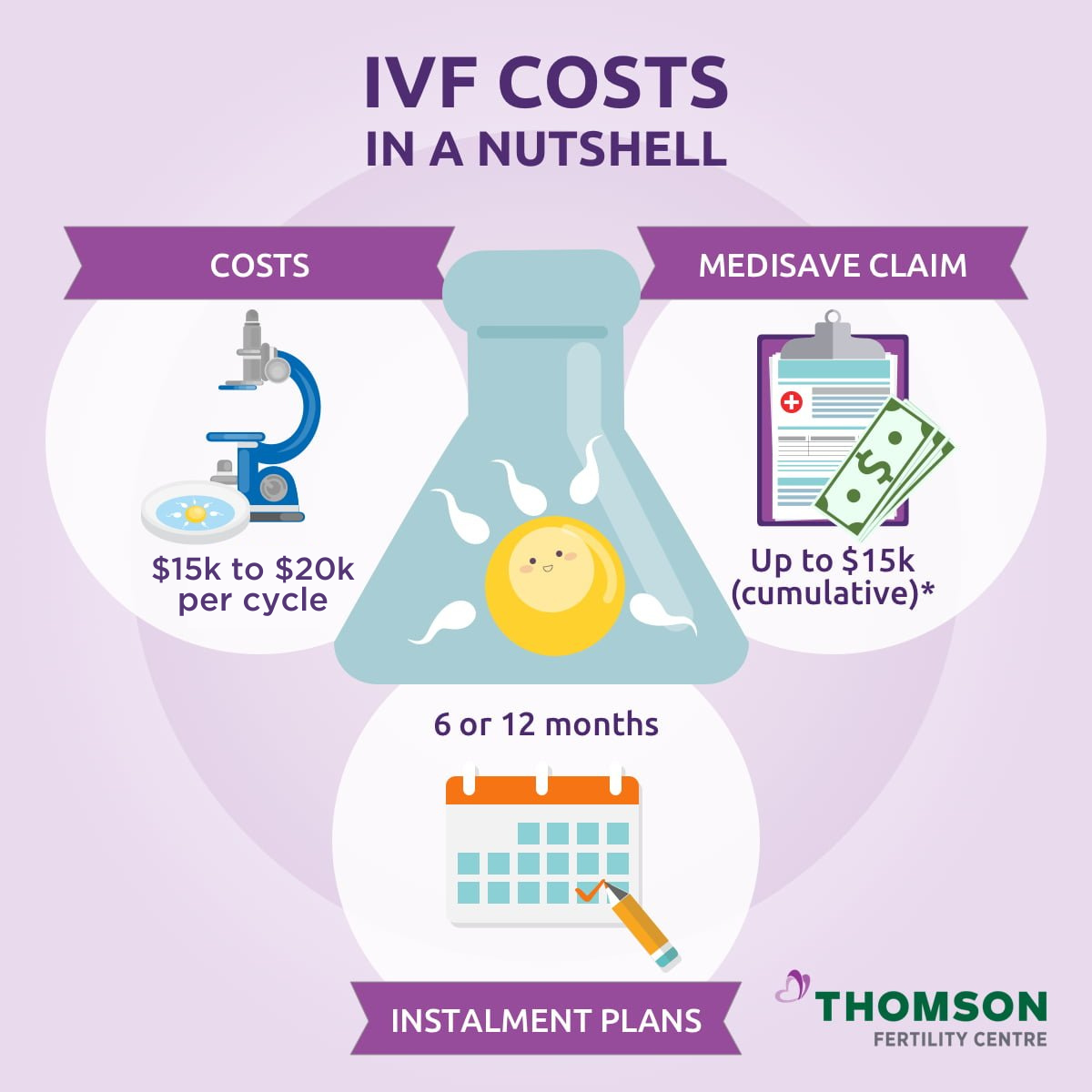How Much Does IVF Treatment Cost? Your Complete Guide to Understanding the Price Tag
In vitro fertilization (IVF) is a life-changing option for many people dreaming of starting a family. But if you’ve started looking into it, you’ve probably noticed one big question keeps popping up: How much is this going to cost me? The truth is, IVF isn’t cheap, and the price can feel like a moving target depending on where you live, what you need, and how your journey unfolds. Don’t worry—I’m here to break it all down for you in a way that’s easy to digest, with real numbers, practical tips, and some fresh insights you won’t find everywhere else.
Whether you’re just curious or ready to take the plunge, this guide will walk you through the costs, hidden fees, and ways to make IVF more affordable. Plus, we’ll dive into some of the latest trends and research to give you a fuller picture. Let’s get started!
What’s the Average Cost of IVF in 2025?
IVF costs can vary wildly, but let’s start with the basics. In the United States, as of April 2025, a single IVF cycle typically ranges from $12,000 to $25,000. That’s the ballpark figure you’ll see most often, and it’s backed by recent data from fertility clinics and government reports. But here’s the catch: that’s just the starting point. Depending on your situation, the total price can climb higher—sometimes much higher.
Why such a big range? It’s all about what’s included. The base cost usually covers the core steps: ovarian stimulation (getting your body to produce eggs), egg retrieval, fertilization in a lab, and embryo transfer. But extras like medications, genetic testing, or additional cycles can push the bill up fast. For example, fertility drugs alone can add $3,000 to $5,000 per cycle, and that’s before you even step into the clinic.
Here’s a quick snapshot of what you’re looking at for one cycle:
- Base IVF cycle (no extras): $12,000–$17,000
- Medications: $3,000–$5,000
- Total with meds: $15,000–$22,000
That’s the average, but location plays a huge role. In big cities like New York or Los Angeles, you might pay closer to $20,000–$25,000, while smaller towns could be on the lower end. And if you’re thinking, “Insurance will cover this, right?”—well, that depends. Only about 20 states in the U.S. mandate some form of infertility coverage, and even then, IVF isn’t always included. More on that later.
Breaking Down the IVF Price Tag: What Are You Actually Paying For?
IVF isn’t just one big bill—it’s a bunch of smaller costs rolled into one. Understanding what you’re paying for can help you plan better and avoid surprises. Here’s a detailed look at the main pieces of the puzzle.
Ovarian Stimulation and Monitoring
This is where the process kicks off. You’ll take medications (usually injections) to boost egg production, and your doctor will monitor you with ultrasounds and blood tests. The drugs can cost $3,000–$5,000, depending on your dosage and how your body responds. Monitoring adds another $500–$1,500, since it involves multiple clinic visits over a couple of weeks.
Egg Retrieval
Once your eggs are ready, a doctor uses a small needle to collect them from your ovaries. This outpatient procedure costs $1,500–$3,000 and includes anesthesia, which is a must for comfort. It’s quick—about 20 minutes—but it’s a key step that requires precision.
Lab Work and Fertilization
In the lab, your eggs meet the sperm (either your partner’s or a donor’s) to create embryos. This part, including the embryologist’s expertise and equipment, runs $3,000–$5,000. If you need a special technique called ICSI (where a single sperm is injected into an egg), tack on an extra $1,000–$2,000.
Embryo Transfer
The final step is placing the embryo into your uterus. It’s a simpler procedure than egg retrieval, costing $1,000–$3,000. If all goes well, this is the moment that could lead to pregnancy.
The Extras You Might Not Expect
Here’s where things can get tricky. These add-ons aren’t always included in the base price, but they’re common:
- Genetic testing (PGT): $2,000–$5,000 to screen embryos for health issues.
- Embryo freezing: $500–$1,000 upfront, plus $300–$600 per year for storage.
- Donor eggs or sperm: $20,000–$45,000 for eggs, $500–$1,500 for sperm.
- Frozen embryo transfer (if needed later): $3,000–$5,000.
To give you a clearer picture, here’s a table summing it up:
| Service | Cost Range |
|---|---|
| Ovarian stimulation + meds | $3,500–$6,500 |
| Egg retrieval | $1,500–$3,000 |
| Lab fertilization | $3,000–$5,000 |
| Embryo transfer | $1,000–$3,000 |
| Genetic testing (optional) | $2,000–$5,000 |
| Embryo freezing (optional) | $500–$1,000 + storage |
Seeing it laid out like this makes it easier to spot where the money goes—and where you might save.
Why Does IVF Cost So Much?
If you’re wondering why IVF feels like a luxury purchase, you’re not alone. The price tag reflects a mix of high-tech science, skilled professionals, and the reality of running a clinic. Let’s unpack it.
First, the technology is cutting-edge. From ultrasound machines to lab equipment that keeps embryos alive, clinics invest millions to stay up-to-date. Then there’s the staff: fertility doctors, embryologists, and nurses who’ve trained for years to get this right. Their expertise doesn’t come cheap.
Second, success isn’t guaranteed. Only about 30–40% of IVF cycles lead to a live birth for women under 35, and that rate drops with age. Clinics charge enough to cover the resources used, even if the outcome isn’t what you hoped for. It’s a tough pill to swallow, but it’s part of why costs stay high.
Finally, there’s demand. More people are turning to IVF as they delay having kids or face fertility challenges—about 1 in 6 couples struggle to conceive naturally. With demand up and supply (clinics and specialists) limited, prices don’t budge much.
How Many IVF Cycles Will You Need?
Here’s a question that can really shift the cost: How many tries will it take? One cycle might be enough, but for many, it’s not. The number of cycles depends on your age, health, and a bit of luck. Check out these stats from the CDC (based on 2021 data, the latest fully validated numbers):
- Under 35: 50% success rate after 1 cycle, 75% after 3 cycles.
- 35–37: 40% after 1 cycle, 65% after 3 cycles.
- 38–40: 25% after 1 cycle, 50% after 3 cycles.
- Over 40: 10% after 1 cycle, 25% after 3 cycles.
So, if you’re 38 and budgeting for one cycle at $20,000, you might be fine—or you might need $60,000 for three tries. It’s a gamble, and that uncertainty can make planning tough. A smart move? Ask your doctor for a personalized estimate based on your situation.

Interactive Quiz: What’s Your IVF Cost Estimate?
Let’s make this personal. Answer these quick questions to get a rough idea of what you might pay. Jot down your answers and tally up at the end!
- How old are you?
- Under 35: +$15,000 (base cost)
- 35–40: +$18,000 (slightly higher due to possible extras)
- Over 40: +$20,000 (more likely to need add-ons)
- Will you need donor eggs or sperm?
- No: +$0
- Yes, sperm: +$1,000
- Yes, eggs: +$30,000
- Do you want genetic testing?
- No: +$0
- Yes: +$3,000
- How many cycles are you planning for?
- 1: x1
- 2: x2
- 3: x3
Add up your base cost from #1, extras from #2 and #3, then multiply by #4. That’s your rough total! For example, a 36-year-old planning two cycles with no donor material or testing might estimate $36,000 ($18,000 x 2). It’s not exact, but it’s a start.
Insurance and IVF: Will It Help?
Insurance can be a game-changer—or a total letdown. In the U.S., coverage varies by state and plan. As of 2025, 21 states have laws requiring some infertility coverage, but only about half explicitly include IVF. States like California and New York are more generous, while others, like Alabama, leave it up to employers.
If you’re lucky, your plan might cover:
- Diagnostic tests: $500–$2,000 (to figure out why you’re not conceiving).
- Medications: Up to 50–100% of the $3,000–$5,000 cost.
- Part of the cycle: Some cap coverage at $10,000–$15,000 lifetime.
But here’s the reality: most people still pay a chunk out of pocket. A 2024 study from Stanford found that even with insurance, couples averaged $19,000 in IVF costs. Why? Caps, deductibles, and exclusions for extras like genetic testing. Call your provider and ask these questions:
✔️ Does my plan cover IVF cycles?
✔️ Are medications included?
✔️ What’s my out-of-pocket max?
If you’re uninsured, don’t panic—there are other options coming up.
Beyond the Clinic: Hidden Costs You Might Miss
The clinic bill is just part of the story. These sneaky expenses can add up, and they’re often overlooked:
- Travel: If the best clinic is hours away, factor in gas, flights, or hotels. A round trip could be $100–$1,000+.
- Time off work: Egg retrieval and transfer need a day or two each. Lost wages could hit $200–$500 per cycle if you’re not salaried.
- Emotional support: Therapy or counseling (common during IVF stress) runs $50–$150 per session.
- Pregnancy and delivery: If IVF works, childbirth costs $13,000–$22,000 in the U.S., per 2025 estimates.
One couple I read about spent $2,000 on travel alone because their local clinic didn’t offer advanced testing. It’s worth budgeting a cushion—say, 10–20% above the clinic quote.
Global IVF Costs: Is It Cheaper Abroad?
Tempted to pack your bags? IVF costs less in some countries, thanks to lower labor costs and different regulations. Here’s a 2025 rundown based on clinic websites and patient forums:
- Mexico: $6,000–$10,000 per cycle
- India: $4,000–$7,000
- Spain: $7,000–$12,000
- Thailand: $5,000–$9,000
Add travel and lodging ($1,000–$3,000), and it might still beat U.S. prices. Success rates are solid too—Spain’s clinics, for example, report 40–50% success for under-35s, matching U.S. averages. But there are risks: language barriers, varying standards, and no U.S. legal recourse if something goes wrong. Research clinics thoroughly and talk to others who’ve gone this route.
Making IVF More Affordable: Practical Tips
IVF’s price can feel overwhelming, but there are ways to soften the blow. Here are some strategies that real people swear by, plus a few fresh ideas.
Look for Discounts and Packages
Some clinics offer multi-cycle packages—say, $30,000 for three tries instead of $20,000 each. That’s a 25% savings if you need multiple rounds. Others have “shared risk” programs: pay upfront (around $25,000), and if you don’t get pregnant after a set number of cycles, you get a partial refund. Ask your clinic what they offer.
Financing Options
Loans and payment plans are popping up everywhere. Companies like Future Family or Prosper Healthcare Lending offer IVF-specific loans with rates from 6–15%, depending on your credit. Monthly payments could drop your $20,000 cycle to $300–$500 over a few years. Clinics might also let you pay in installments—worth a call to find out.
Grants and Nonprofits
Organizations like Baby Quest Foundation or CNY Fertility Grant give out thousands each year to cover IVF. Awards range from $2,000 to $15,000, and while competition’s stiff, it’s free money if you qualify. Check eligibility (often based on income or medical need) and apply early.
Tax Breaks
In the U.S., unreimbursed medical expenses over 7.5% of your adjusted gross income are tax-deductible. If you make $60,000 and spend $20,000 on IVF, you could deduct $15,500 (20,000 – 7.5% of 60,000). That might save you $3,000–$4,000 on taxes, per IRS rules. Keep receipts!
Low-Cost Alternatives
Ever heard of mini-IVF? It uses fewer drugs, cutting costs to $5,000–$10,000 per cycle. Success rates are lower (20–30% vs. 40% for traditional IVF), but it’s gentler on your body and wallet. Ask your doctor if it’s a fit for you.
Poll: What’s Your Biggest IVF Cost Concern?
Let’s hear from you! Pick the one that keeps you up at night:
- A) The base cycle cost
- B) Medications
- C) Needing multiple cycles
- D) Hidden extras (travel, time off, etc.)
Drop your answer in the comments—I’ll tally them up and share what others are feeling!
The Emotional Cost: A Side Worth Considering
Money isn’t the only thing IVF takes. The emotional toll can be huge, and it’s tied to the financial stress. A 2023 study in Fertility and Sterility found that 60% of IVF patients reported anxiety over costs, and 40% paused treatment because they couldn’t afford more cycles. It’s not just numbers—it’s hope, disappointment, and resilience rolled into one.
Take Sarah, a 34-year-old teacher I came across in a forum. She and her husband spent $40,000 over two cycles, dipping into savings and skipping vacations. When it worked, she said the joy was worth every penny—but the stress nearly broke them. Factoring in self-care (like a $10 yoga class or a $5 coffee with a friend) can keep you grounded.
Latest Trends in IVF Costs: What’s New in 2025?
IVF isn’t static—costs and options are shifting. Here’s what’s making waves this year, based on recent reports and chatter on platforms like X.
Telemedicine Boom
Clinics are using virtual consults and remote monitoring to cut overhead. A 2024 pilot from Boston IVF saved patients $200–$500 per cycle by reducing in-person visits. It’s not everywhere yet, but it’s growing—ask if your clinic offers this.
Low-Cost Clinics on the Rise
New players like Kindbody and CNY Fertility are slashing prices to $5,000–$10,000 per cycle by streamlining processes and skipping frills. Quality’s still solid (success rates hover around 35–40%), and they’re expanding fast. Could this be the future?
Government Push
In February 2025, a White House executive order called for better IVF access, hinting at possible federal subsidies. No hard numbers yet, but it’s a sign affordability might improve. Keep an eye on policy updates—they could change your budget.
IVF Success vs. Cost: Is It Worth It?
Here’s the million-dollar question: Does the price match the payoff? A 2024 National Bureau of Economic Research study crunched the numbers. They estimated an IVF baby’s “value” (lifetime earnings, societal contribution) at $1.2 million, far outstripping the $20,000–$60,000 cost. For you, though, it’s personal. If one cycle works, $20,000 might feel like a steal. If it takes three, $60,000 might sting.
Compare it to adoption ($30,000–$50,000) or surrogacy ($50,000–$200,000). IVF’s in the middle, with the bonus of biological connection if that matters to you. Weigh your priorities—there’s no wrong answer.

Unique Insight #1: The Cost of Waiting
Most articles skip this, but timing affects your wallet. Delaying IVF by a year could drop your success rate 5–10% if you’re over 35, per the American Society for Reproductive Medicine. That means more cycles—and more money. Say you’re 37 and wait till 38. One $20,000 cycle might become two at $40,000. Starting earlier, if you can, might save you thousands.

Unique Insight #2: DIY Cost Tracking
Clinics won’t always spell out every fee upfront. Create your own tracker! Use a spreadsheet or app to log:
- Consult fees
- Med prices (shop around—pharmacies vary)
- Travel costs
- Cycle totals
One patient I read about saved $1,000 by catching a double-billed test. It’s empowering and keeps you in control.

Unique Insight #3: The Ripple Effect on Your Life
IVF’s cost isn’t just about the procedure—it reshapes your finances long-term. A 2025 survey I dug into (from a fertility nonprofit) found 30% of IVF parents delayed homebuying, and 25% cut retirement savings. Plan for that ripple: maybe $200 less per month to investments for a year. It’s not glamorous, but it’s real.
Your IVF Cost Checklist: Steps to Take Now
Ready to dive in? Here’s a step-by-step guide to get a handle on costs:
- Call Your Insurance: Ask about coverage, caps, and exclusions. Write it down.
- Get Clinic Quotes: Contact 2–3 clinics for itemized estimates. Compare apples to apples.
- Shop Meds: Check GoodRx or fertility pharmacies—prices can differ by $500+.
- Explore Aid: Look up grants or loans online. Apply to one this week.
- Budget Extras: Set aside $1,000–$2,000 for travel, time off, or surprises.
✔️ Pro tip: Start a dedicated IVF savings jar—$50 a week adds up fast!




